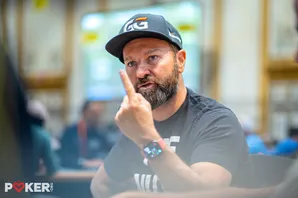I haven’t read all the non-strategy poker books. But I bet I’ve read more of them than you have. If you love poker, then you should read all of these books. Furthermore, you might find it useful to read them in this sequence, so they’re chronologically aligned.
- Biggest Game in Town, by Al Alvarez. Alvarez, who passed away in 2019, was a legendary British writer and journalist, and the first capital ‘W’ Writer to do an in-depth look at the poker world. He reported on the 1981 WSOP, and was completely embedded with the legends of the time – Brunson, Moss, Strauss. Thank god he did, because that world is gone now. In fact, in a foreword to a 2008 edition of his book, he wrote:
"The World Series is now held in a conference hall as big as the biggest aircraft hangars and the place seems to have no shadows at all. It is just a great anonymous sea of crowded poker tables crammed together under the hard lights, more like the mess hall of some gigantic prison than the setting of any poker game that I have ever played in. I am sure the games are as fierce and enthralling as they ever were and I look forward to watching them on television. But I wouldn’t want to go back."
Alvarez was a towering giant of a writer, and you can smell the cigar smoke at Binion’s as he writes about the people and the games. - Big Deal, by Tony Holden. Holden (who passed away in 2023) was good friends with Alvarez. He took the poker bug a step further, and became a 'professional poker player' (in name, if not ability) for a year between 1988-1989. Like Alvarez, he was Oxford-educated and was famous for his writing – he just happened to have a passion for poker. Big Deal covers Holden’s world-trotting journey as a would-be professional, including the WSOP, eight years after Alvarez’s coverage. Many of Holden’s characters are the same ones that Alvarez hung out with, but because Holden was actually in the games and bouncing around the world to find them, there’s more of a seat-at-the-table view.
- Shut Up and Deal, by Jesse May. Jesse May was a professional poker player who transitioned to poker journalism and TV commentary. This 1998 book, of all in this list, best reflects the day-to-day dollar-to-dollar existence of a poker professional on the margins, particularly in the pre-Moneymaker days. There’s degeneracy, there’s a lot of money borrowing and lending. But if you’re a poker player, every one of May’s words rings true. He’s not an Alvarez or Holden as a writer, but he lived the existence they only wrote about, and this book reflects that.
- The Professor, the Banker, and the Suicide King, by Michael Craig. This book came out in 2006, at the height of the post-Moneymaker boom, but it tells a story that happened in 2001, just two short years before Chris Moneymaker would turn the poker world upside down. It also features the 'next generation' of poker superstars, though the godfather who directs the 'Corporation' is none other than Doyle Brunson, who was Alvarez’s and Holden’s guide to Las Vegas poker in the 1980’s. Adam Hampton wrote an excellent synopsis of the arc of the book, but you owe it to yourself to read the entire thing, including descriptions of racks of 'cranberries' ($25,000 poker chips) changing hands between two players.
- For Richer, For Poorer, by Victoria Coren. Victoria Coren-Mitchel is a star of British journalism and TV, but in her breast beats a poker player’s heart. This 2009 book is a story of her love affair (there’s no other word) with poker. It culminates with her at the final table of a European Poker Tour main event at her home court – the Grosvenor Victoria Casino in London. The Times (London, not New York) said this about the book:
“A book so rich in detail, so full of laughter, that you feel as if the coolest member of your family has just let you in on a secret so delicious you will savor it forever.”
Exactly right. - The Biggest Bluff, by Maria Konnikova. Published in 2020, this may well be the best non-strategy poker book of all time. In 2017, she approached poker Mt Rushmorian Erik Seidel, and asked him to introduce her to poker – she literally didn’t know how many cards there are in a deck. But Konnikova graduated magna cum laude from Harvard, and has a PhD in psychology – brains and critical thinking skills were never going to be the issue.
Somehow she went from poker newbie to fearsome competitor in record time, and eventually won a side event at the PokerStars Caribbean Adventure in 2018. But the true narrative here is a brilliant writer reflecting on the thoughts and perspective of Seidel, who is in a poker category all his own.
I say this is a non-strategy book, but it also might be the best poker strategy book ever. If you could somehow understand everything Seidel says about the game, and everything Konnikova says about personality and psychology, you’d probably be near-unbeatable at the table.
In a stroke of fortune for poker, Konnikova is now making it one of her highest priorities – I hope she’ll write another poker book soon.



















